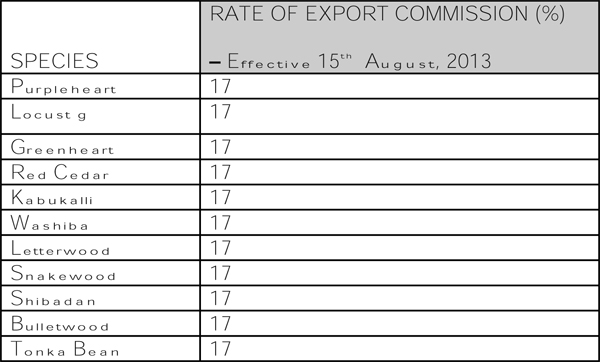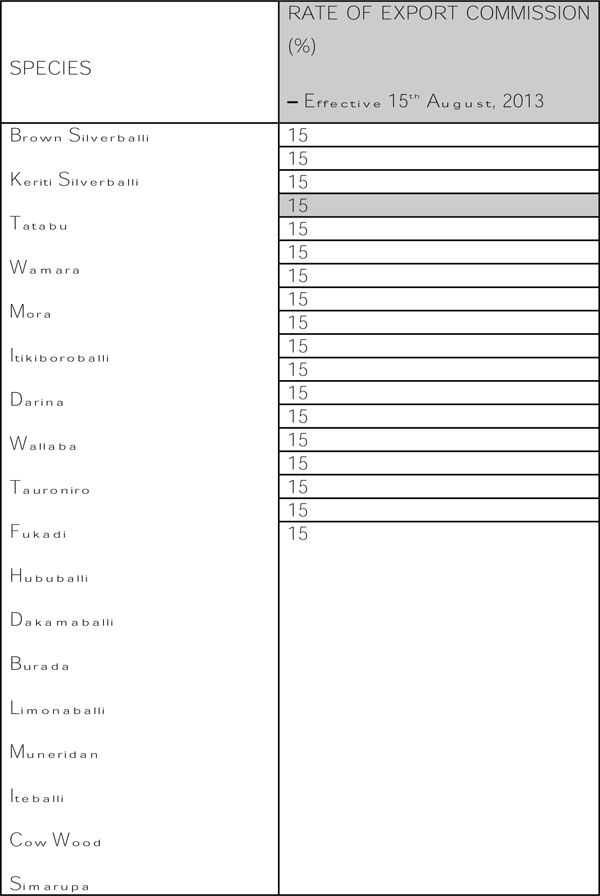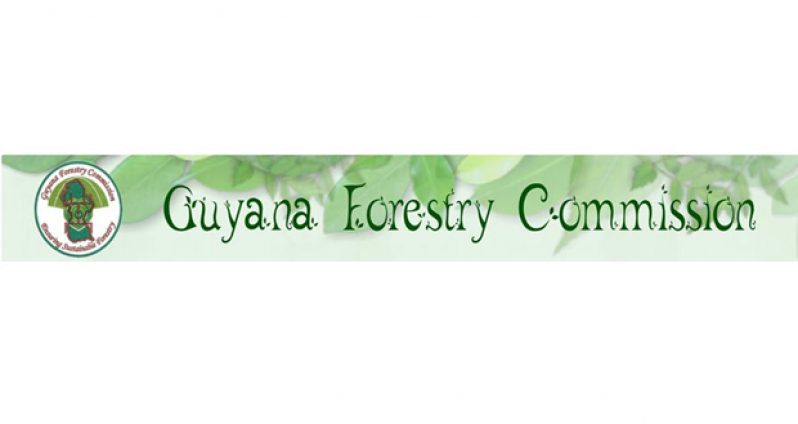–particularly with regard to forest management
THE following document was issued yesterday by the Guyana Forestry Commission (GFC), in light of continued media reports on Bai Shan Lin’s operations in the forestry sector, and comments regarding the legality of the Commission’s role in the monitoring of log extraction and exportation:
FACT 1: The operation of the Forest Sector of Guyana is governed by the Forest Act 2009 which clearly prescribes the legality requirements of various aspects of forest operations in Guyana. One of such requirements allows holders of State Forest Exploratory Permits to engage in limited commercial harvesting to a maximum of 25% recoupment of exploratory cost.
Forest Act 2009 Excerpts, Section 9 (1), Exploratory permit. 9.
(1) In this section where no percentage is prescribed, 25%;
(2) The Commission may on application grant an exploratory permit to any person:
a. To carry out exploratory operations within a specified areas of State Forest with a view to applying for a concession in respect of that area or any part of it; and
b. To cut and take specified kind and quantities of forest produce from that exploratory areas for testing, research and limited commercial purposes to the extent necessary to recoup no more that the appointed percentage of the cost and expenses (excluding capital expenditure) incurred in the exploratory operations during the life of the permit.
All forest operations in Guyana are in compliance with this legal provision.
FACT 2: The Laws of Guyana allows for the formation of commercial relationships in the form of Partnerships, Joint Ventures, mergers and acquisitions, etc. The Forest Act 2009 stipulates in Sections 15 and 16 that if a Company which has been issued a forest concession wishes to engage in any type of such relationship they must first seek the approval of the Commission and follows a standard process.
Bai Shan Lin, in accordance with the legal provisions of Sections 15 and 16 of the Forest Act 2009, has established Joint Ventures with the following local forest operators:
•Haimorakabra Logging Company
•Kwabanna Wood Products Inc.
•Puruni Wood Products Ltd.
•Wood Associated Industries Company Ltd (WAICO)
Bai Shan Lin is also working with small and medium-size operators in the area of equipment support through rental agreements. This form of cooperation enables small loggers, who may not have the level capital resource capability to allow maximum sustainable utilization, to be able to do so. This contributes to the boosting of the sustainable livelihoods at the community level.
These arrangements have benefitted both the local partner and the investor, and by extension the forest sector and it allows for the maximizing of synergies from such partnerships.
FACT 3:
Guyana’s National Log Export Policy does not prevent the exportation of logs but established the framework within logs can be exported from Guyana. The forest sector has in place a graduated scale of export commission computed on the free on board export price for logs. These prices are continuously revised taking into consideration local and international market rates. The Log Export Policy consists of two schedules: A and B and can be accessed at the GFC’s website and is outlined below:
Schedule A – Species of Logs and Squares 3 cm X 20.3 cm and greater (or 8” X 8” and greater)
 Schedule B – Logs and Squares 20.3 cm X 20.3 cm and greater (or 8” X 8” and greater)
Schedule B – Logs and Squares 20.3 cm X 20.3 cm and greater (or 8” X 8” and greater)

These rates are among the highest rates in the world, in tropical timber producing countries. Attention is drawn to the species of Wamara, which attracts a rate of 15%. Prior to 2009, the rate for all species of logs was 2%.
Many of these species such as Wamara were only 5 years ago, deemed as Lesser Utilized Wood species. However with emerging markets in India and China for these species, they are now harvested in commercial and have expanded the species utilization of Guyana. Additionally, this has been of significant benefit to local operators at small and medium size level whose concession may not have an abundance of the traditional commercial species such as Greenheart and Purpleheart.
FACT 4: Guyana’s forest sector is operating at 30-40% of the maximum sustainable annual production level. This trend has been recorded for the past decade and continues to be the case to date.
Bai Shan Lin’s operation is in keeping with the maximum sustainable level set for the allocated concessions.
Over the past 10 years, the range of production and timber was 308,000m3 to 502,500m3. This can be compared to the annual maximum sustainable level of 1,600,000m3 and represents one third of the maximum sustainable level.
Harvesting of forest products, such as logs, have a significant remaining room for expansion given that the current level is far below the maximum sustainable allowable production.
FACT 5: Logging activities in Guyana are guided by strong forestry guidelines, such as the Code of Practice for Timber Harvesting. From previous and current studies of the forest sector, including annual assessment of forest area change, there has always been very low impact of logging activities on the forest. This is evident in the
The most recent Monitoring and Reporting Verification System (MRVS) Report covering 2012 indicates that the forestry sector as a driver accounts for 240 ha of deforestation and 113 ha of forest degradation, while Guyana’s total deforestation and degradation amounted to 14,655 and 1,963 ha respectively. These figures equate to 0.0013 percent of the total deforested and degraded land cover change in 2012 by the forestry sector.
This by no means is a compromise in commitment to the Agreement with Norway, as the forestry sector has been unable to meet its maximum sustainable level.
Bai Shan Lin’s operations in the forest sector in no way adversely impact on the maintenance of the forest cover in Guyana.
FACT 6: The GFC has in place a wide network of monitoring outposts that allows for effective real-time monitoring of forest operations. The GFC also has a complement of high caliber field staff that has the relevant resources to effectively monitor forest operations countrywide.
Specifically in Region 10 area, the GFC has the following Monitoring Stations, some of which are 24 hour stations:
•Linden
•Ituni
•Kwakwani
•Bissaruni
•Hururu
•Haimorakabra
•Kurunduni
•WAICO
•UNAMCO
Collectively, these stations are manned by 50 forest officers and accompanying support staff.
More specifically, at Bai Shan Lin’s operations at Bissaruni, there are 10 resident forest officers and are support by the legality monitoring team that comprises approximately 12 forest officers. In addition, period checks are done by the Internal Audit Unit of the GFC.
Altogether, these help to ensure that there is strong forest legality and forest governance at the concession level, including at Bai Shan Lin.



.jpg)








